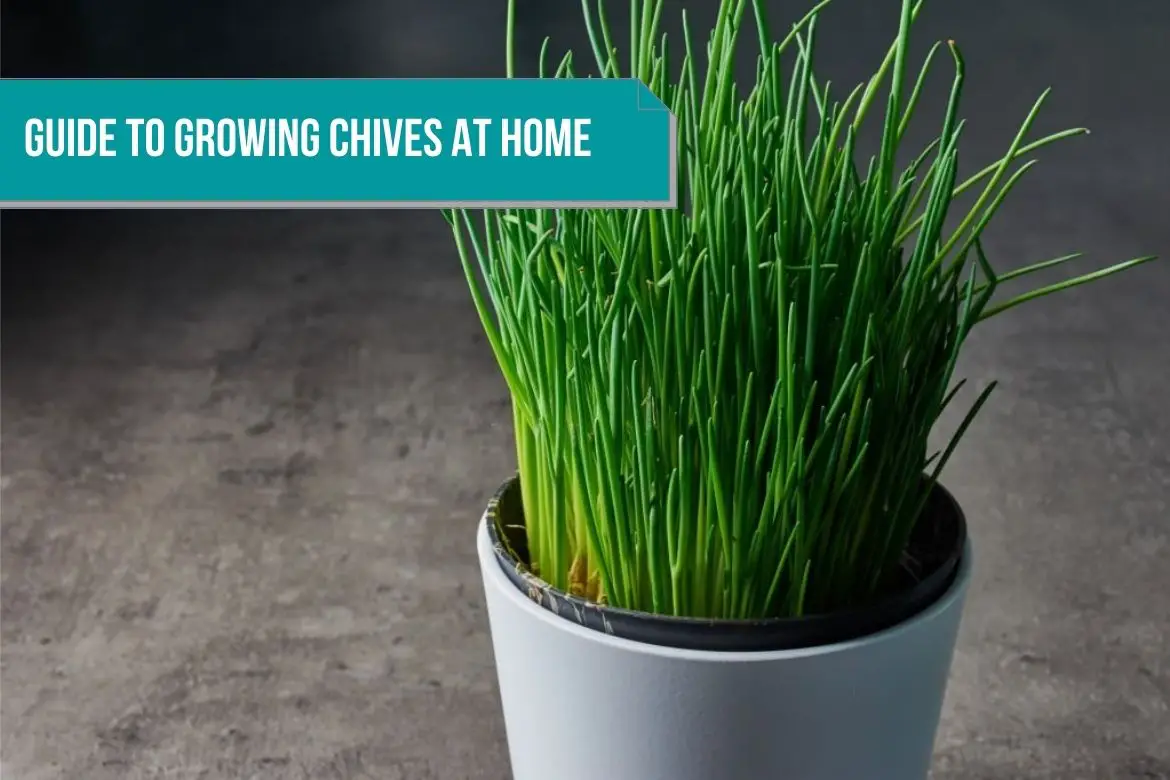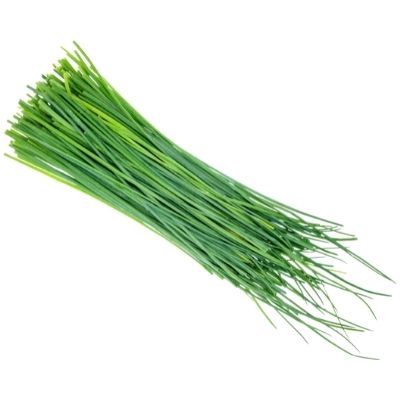
Botanical name : Allium schoenoprasum
Flavor Profile : Fresh, mild spicy, undertone flavor of onions, little milder than scallions
Chives are aromatic herbs belonging to the same family as shallot, onion, garlic, leek and bunching onion. Among the onion family, chives are the smallest and mildest member.
The French word ‘cive’ is the source of its English name, chive. Also known as European chive or common chive, it is both a culinary and a medicinal herb.
The bulbous, onion-like chive plants grow in clumps. About six inches long, the leaves are hollow, slender, and tubular. They produce very pretty violet flowers. The flowers are also edible.
Chives have become native to northern Europe and parts of North America. However, it has been established that chives were known to the Chinese 5,000 years ago.
A lot of European gardens did not know about it until the 16th century, but once it was known, it became popular. At the time, chives were mostly used for food. The Italians introduced it to Germany in the 17th century. Chives became a common food among English peasants during the 1600s, and they have been used periodically as potherbs since then. In 1806 the plant was included in the list of edible plants in American.
Varieties of chives
- Allium schoenoprasum – European chive or common chive
- Allium ledebourianum – Giant Siberian chive
- Allium nutans – Siberian garlic chive
- Allium tuberosum – Chinese chive or garlic chive
Health benefits of Chives
As our body digest chives, the digestive enzymes activate a compound called allicin from chives. This compound has antibacterial and anti-fungal properties.
Allicin also assists in reducing blood sugar and cholesterol.
It has also been established that chives help in alleviating kidney stone.
It is high in vitamin C content which in-turn boosts our immune system.
Chive flowers are a good source of saturated and unsaturated fatty acids, vitamin E, sulfur containing compounds and sterols.
In addition to containing high levels of minerals like copper, potassium, calcium, manganese and iron, chives are also rich in vitamin B6, B9, A and K.
Please refer complete nutrition fact of chives for more details
How to grow Chives indoors
Chives are native to cool regions of Europe and Asia, cold-tolerant plants that thrive in full sunlight. Low light conditions are detrimental to their flavor.
A perennial herb, chive can also be grown as an annual plant, where the entire plant is harvested after a 1 to 2 month growing period.
When grown outdoors, chives will enter dormancy in winters and become active again in spring. This can be avoided if you are growing chives in containers indoor with controlled environment.
Plant size
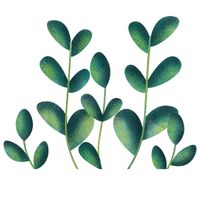
1- 2 feet ( 30 – 60 cm )
Container / pot Size

6 – 8 inches Diameter ( 15 – 20 cm )
Refer how to choose the right container for your indoor plants for more details.
Sunlight

Full Sun. A lot of light is essential for growing chives.
Chives can even be grown in shades. However, it has been seen that this inversely effects the flavor profile of chives. Hence, providing chives with 6-8 hours of sunlight is advisable.
For best results in growing chives indoors, place the container near a large south facing window. Or you can place the container near east or west facing windows or windowsills. Placing under a skylight is also a good option.
Refer Best locations and Light requirements for indoor plants for more details.
Soil

Well drained,loose, friable and rich in organic matter potting mix.
Although a hardy plant like chive is not very finicky about soil, chives thrive on a soil with pH range 5.8 – 7.0.
Climate and soil temperature of 62-77 degrees F (17-25 C) is advisable.
You can mix compost in the potting mix in the ration of 50:50.
Please refer How to get the right potting mix for your container plant for more details.
Sowing
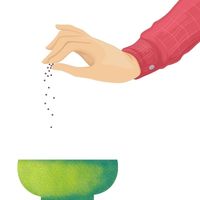
Can be sown by seeds or clump from nursery or cutting or root division method.
Although chives are fit to be sown in any season, sowing the chive seeds as early as possible in spring season or fall is recommended for good results . Plant seeds 1/4th of an inch deep in the potting mix.
As you start seeing small seedlings in 10-14 days, you can start thinning and keep a distance of 4-6 inches between the plants.
In case you are planning to transplant the chive plants, wait for 6-8 weeks of growth. After this you can transplant them to individual containers.
Quick tip: As chives love moist soil, at the time of sowing you can cover the potting soil with wet paper towel. This will help in reducing the moisture loss specially in hot weather.
Watering
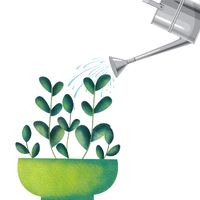
Chive plant is fairly drought tolerant. However, that does not mean that you should water it less. Its a good practice to water the plant regularly ( specially in hot weather). You will have a good yield.
Despite their drought tolerance, chives are able to regenerate after a period of time without water, although this slows the growth process and can reduce yields.
Less water also results in decrease in flavor of chives.
Water the plant till you see water dripping slowly from the drainage holes of the container.
Refer How to make drainage holes on potting container for more details.
Harvesting

A chive plant reaches full maturity in 80 days. However, it can be harvested as early as 60 days after sowing or 30 days after transplanting.
Harvest the leaves using a scissor or knife or a clean pruning tool. Harvest the leaves 1-2 inches close to the ground.
In the first year, harvest the plant 3-4 time. In the subsequent years you can harvest almost every month.
Plant care
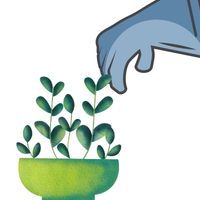
In temperatures below 50 degree F (10 C), chives grow pretty slow. Make sure that the temperatures are conducive for growth.
Also, when the temperature goes above 80 degree F (27 C), the chive plant will start flowering. This will reduce the yield of harvestable chive leaves. Snip off the flowers to prevent this and also to prevent the plant from self seeding.
Make sure that you don’t bruise the leaves while handling or harvesting the plant. Damaged leaves have an “off-flavor”.
SUBSTITUTES FOR CHIVES IN THE KITCHEN
- Green Onions
- Leeks
- Onions
- Scallions
- Spring Onions
How to keep Chives fresh
Chives, a highly perishable herb, can be stored in the refrigerator for 2 days before they start turning brown. If you wish to save chives for a longer period of time, you can freeze store them. Chives freeze well.
Generally, chives are not consumed in dried state.
Please refer to how to store herbs and spices for more details.
How to use Chives in the kitchen
As well as being used in herbal butter and vinegar, fresh chive leaves are also used as a flavoring agent for many dishes.
You can use fresh or dried chives to top a baked potato, or mix them into cream cheese and spread it on a bagel. Add them to salads for a bit of zest, too!
Their crunchy texture is a must for potato salad and yogurt dips.
Dishes : Salads, dips, soup, stir-fries, sauces, marinades, dressings, omelets, stews.
Preparation : Used in chopped form.
Pairing Chives with food
Seasoning : balsamic vinegar, lemon juice, Garlic, mustard, cilantro, tarragon, sweet cicely, basil, tamarind, red pepper flakes, paprika, parsley, fennel, dill, chervil, thyme, garlic.
Fruits and Vegetables : Mushrooms (Enoki Mushroom, Morel Mushroom, White Mushroom / Button mushroom, Cremini Mushroom, Portabella Mushroom, Shiitake Mushroom, Maitake Mushroom, Chanterelle Mushrooms, Oyster Mushroom), celery, avocado, zucchini, Potatoes ( White Potato, Red Potato, Russet Potato, Purple Potato ), carrots, tomatoes, celery, turnips, shallots, parsnips, cucumbers, lettuces (Romaine lettuce, leaf lettuce, iceberg lettuce).
Proteins : Fish and seafood, Eggs, goat cheese, cheddar cheese, cream cheese, bacon, yogurt.

